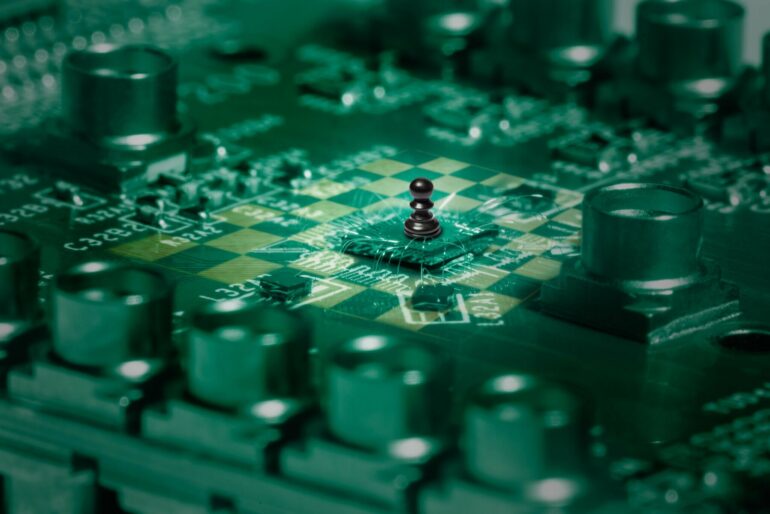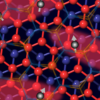Researchers from Delft established a way to address many quantum dots with only a few control lines using a chessboard-like method. This enabled the operation of the largest gate-defined quantum dot system ever. Their result is an important step in the development of scalable quantum systems for practical quantum technology. They publish their results in Nature Nanotechnology.
Quantum dots can be used to hold qubits, the building blocks of a quantum computer. Currently, each qubit requires its own addressing line and dedicated control electronics. This is highly unpractical and in stark contrast with today’s computer technology, where billions of transistors are operated with a couple of thousand lines.
Addressing like a chessboard
Researchers at QuTech—a collaboration between the TU Delft and TNO—have developed a similar method for addressing quantum dots. Just like the locations of chess pieces are addressed using a combination of letters (A to H) and numbers (1 to 8), their quantum dots can be addressed using a combination of horizontal and vertical lines.
Any point on a chessboard can be defined and addressed by using a specific combination of a letter and a number. Their approach takes the state-of-the-art to the next level and enables the operation of a 16 quantum dot system in a 4×4 array.
First author Francesco Borsoi explains, “This new way of addressing quantum dots is advantageous for scaling up to many qubits. If a single qubit is controlled and read out using a single wire, millions of qubits will require millions of control lines. This approach does not scale very well.”
“However, if qubits can be controlled using our chessboard-like system, millions of qubits could be addressed using ‘only’ thousands of lines, corresponding to a ratio very similar to those in computer chips. This reduction in lines gives prospects to scale the number of qubits and represents a breakthrough for quantum computers, that eventually will require millions of qubits.”
Improving quantity and quality
Quantum computers will not only require millions of qubits, but also the quality of the qubits is extremely important. Last author and principal investigator Menno Veldhorst says, “Just recently, we have demonstrated that these types of qubits can be operated with a 99.992% fidelity. That is the highest for any quantum dot system and means an average error of less than 1 per 10,000 operations. These advances have become possible by developing sophisticated control methods and by using germanium as the host material, which has many favorable properties for quantum operation.”
Early application in quantum simulation
With quantum computing being in an early stage of development, it is relevant to consider the fastest route toward a practical quantum advantage. In other words: when will a quantum computer be ‘better’ than a conventional supercomputer? One obvious advantage can be simulating quantum physics, as the interaction of quantum dots is based on the principles of quantum mechanics. It turns out that quantum dot systems may be highly effective for quantum simulation.
Veldhorst says, “In another recent publication, we show that an array of germanium quantum dots can be used for quantum simulation.” This work is the first coherent quantum simulation that uses standard semiconductor manufacturing materials. “We are able to perform rudimentary simulations of resonating valence bonds.” While this experiment was based only on a small device, executing such simulations on a large system may address longstanding questions in physics.
Veldhorst concludes, “It is exciting to see that we have made several steps in scaling to larger systems, improving the performance, as well as obtaining opportunities in quantum computing and simulations. An open question remains how large we can make these chessboard circuits, and in case there is a limit, whether we can interconnect many of them using quantum links to build even larger circuits.”
More information:
Francesco Borsoi et al, Shared control of a 16 semiconductor quantum dot crossbar array, Nature Nanotechnology (2023). DOI: 10.1038/s41565-023-01491-3
Citation:
Chessboard-like method enables the operation of largest gate-defined quantum dot system (2023, August 28)



